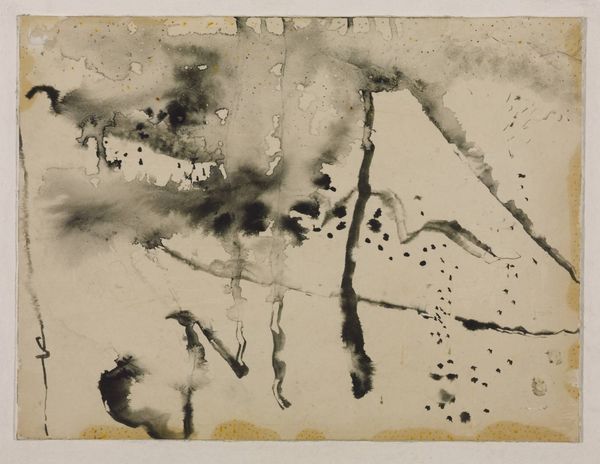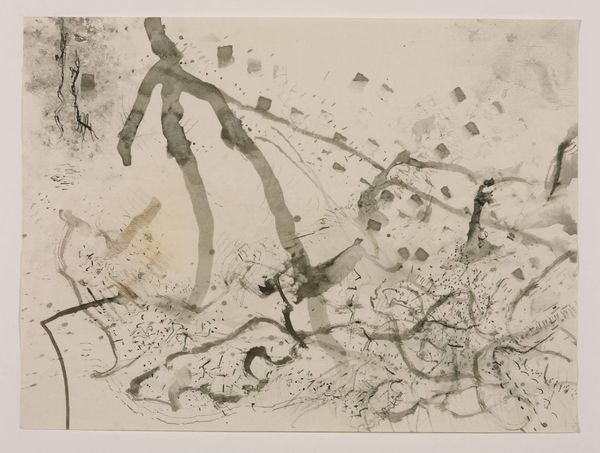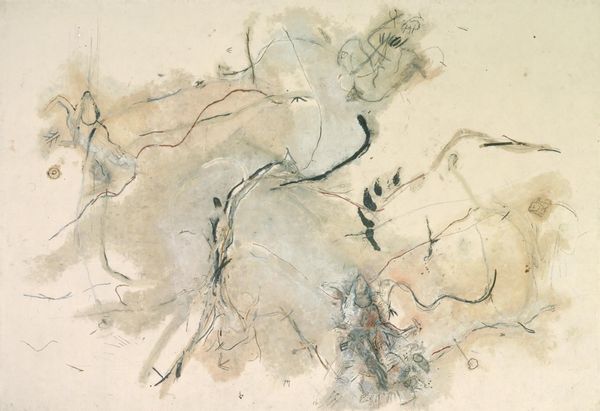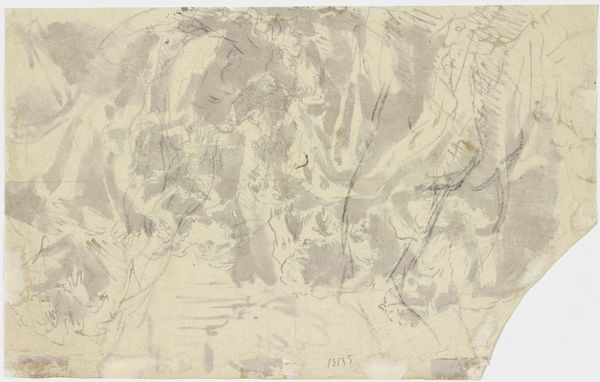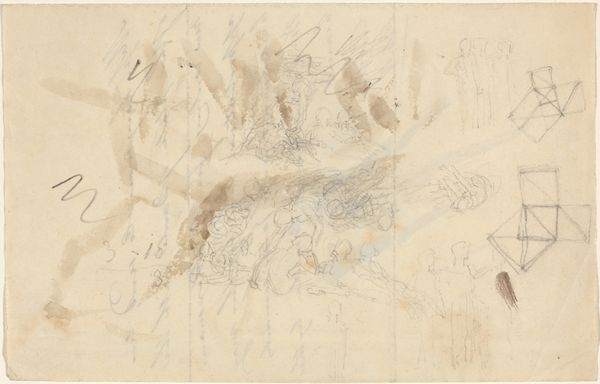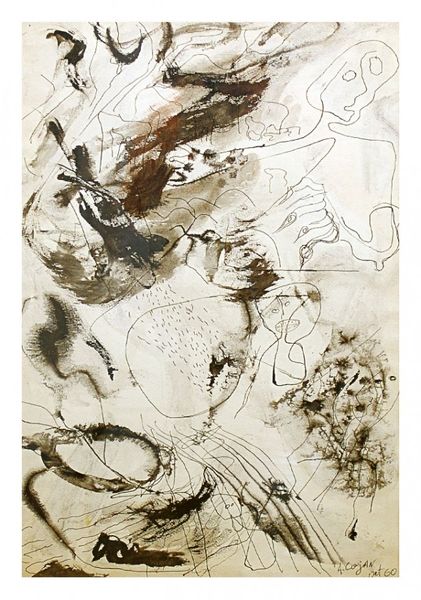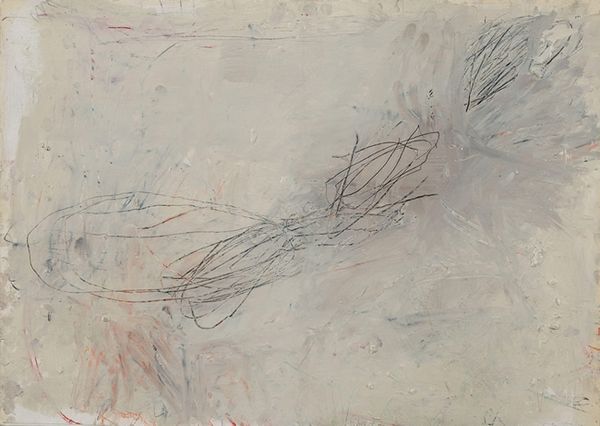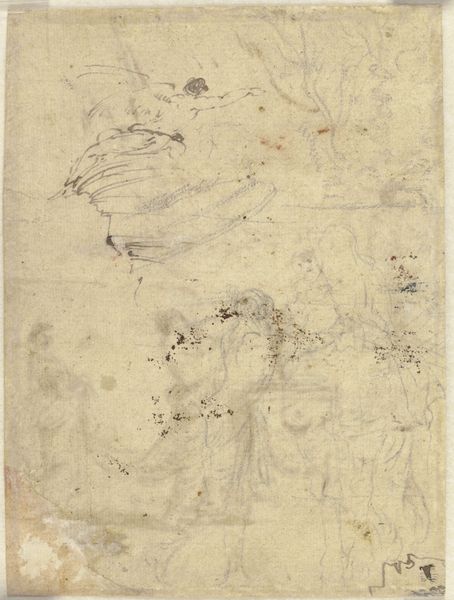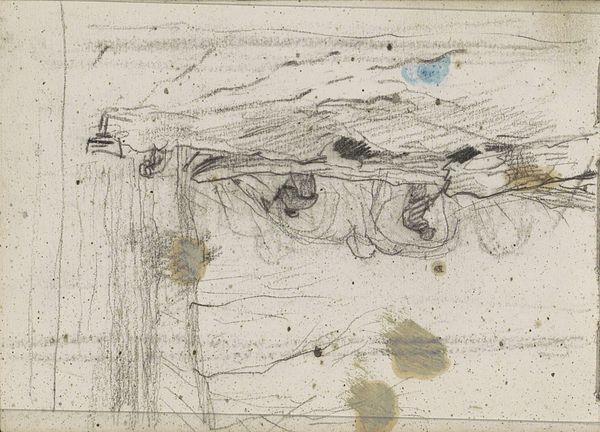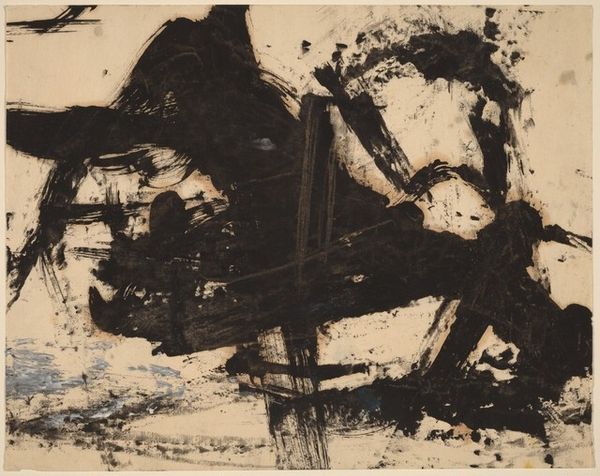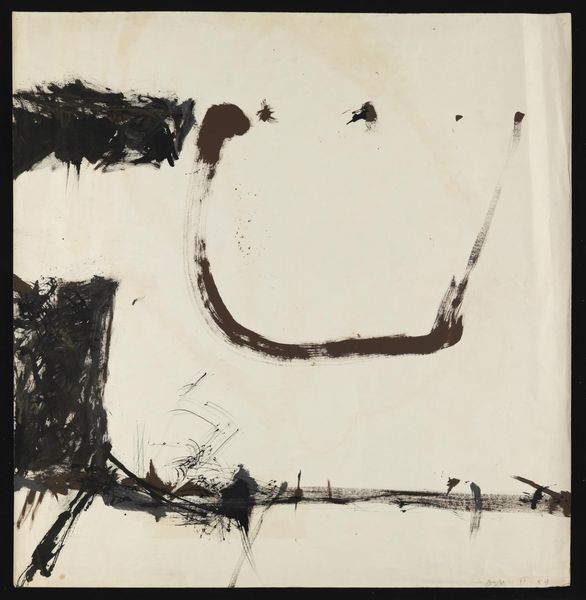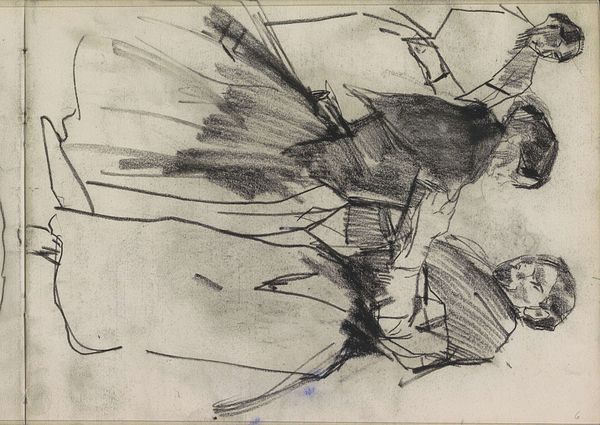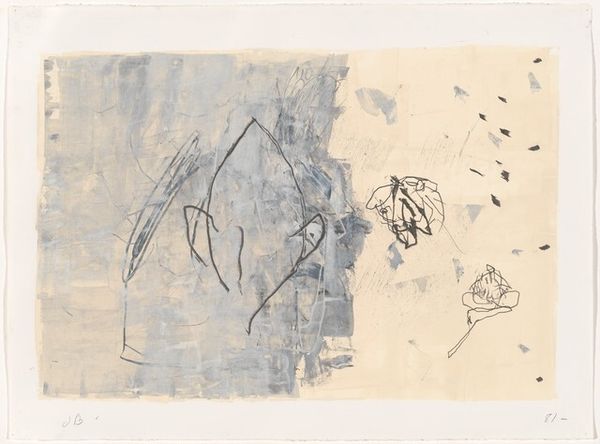
Dimensions: support: 2730 x 3690 mm
Copyright: © Avis Newman | CC-BY-NC-ND 4.0 DEED, Photo: Tate
Curator: Avis Newman's "The Wing of the Wind of Madness," a large mixed media piece here at the Tate, feels almost like a map of an emotional landscape. What strikes you first about it? Editor: The sheer scale! It's like being pulled into a whirlwind, a chaotic dance of lines and muted tones. There’s something unsettling yet compelling about its rawness. Curator: Absolutely. The apparent chaos is deceptive. Note the recurring motifs – those angular shapes, the organic forms struggling to emerge. It is about finding patterns in turmoil, a quest for meaning in what seems senseless. Editor: It feels deeply personal, like a glimpse into someone's fragmented memories. The earth tones suggest decay, but the black lines, like frantic scribbles, hint at a desperate attempt to reconstruct something. Curator: Precisely, consider "wind" as breath and the "wing" as a protective, but potentially dangerous force. Newman is exploring the power of the unconscious. What about the "madness?" Does it liberate or destroy? Editor: Perhaps it's both. Destruction to make way for new creation, like a phoenix rising from ashes. Now, looking again, there's a strange beauty in its vulnerability. Curator: An apt observation. Editor: It's a piece that lingers, isn't it? Something to keep turning over in your mind.
Comments
tate 6 months ago
⋮
http://www.tate.org.uk/art/artworks/newman-the-wing-of-the-wind-of-madness-t07164
Join the conversation
Join millions of artists and users on Artera today and experience the ultimate creative platform.
tate 6 months ago
⋮
Avis Newman has worked with a variety of grounds and formats. But since 1982 she has chiefly been associated with large mixed media drawings on canvas. Until recently the canvases were usually unstretched and pinned directly to the gallery walls for display. Without rigid boundaries or separations between them, elements could flow between images. Recognisable elements in this work include outlines of parts of the human body, bird shapes and paleolithic symbols. This accumulation of marks and traces has been described by the artist as referring to the 'non existent, phantisised body. Specifically the body of sensations. A body of liquidity, touch, temperature, memory'. Gallery label, September 2004
